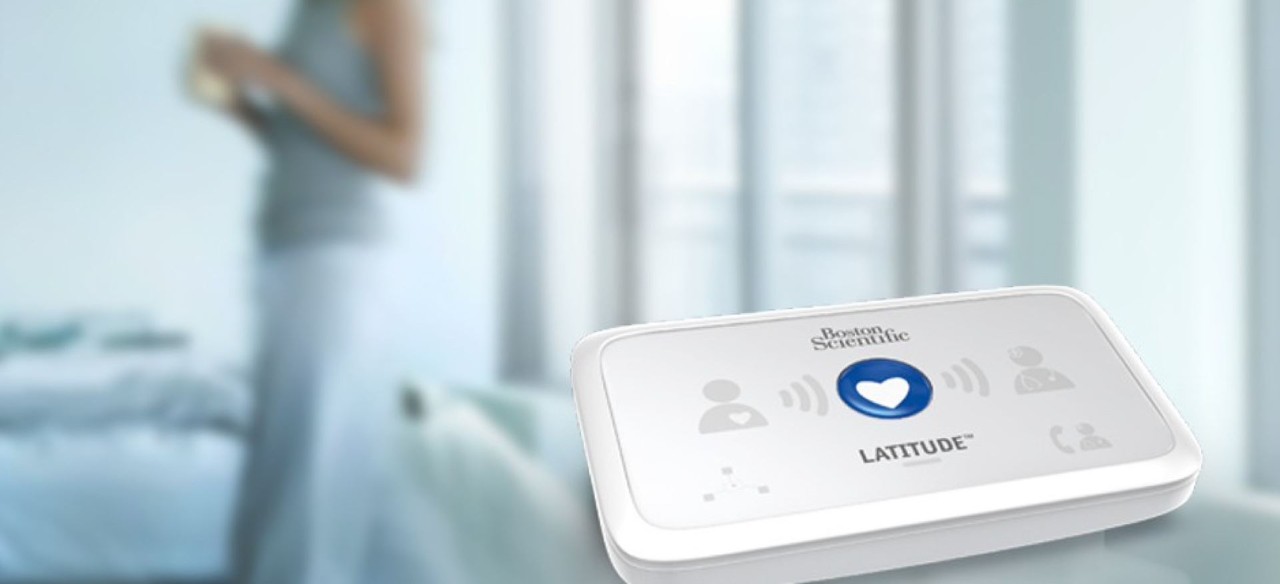Boston Scientific accounts are for healthcare professionals only.
Frequently asked questions
Yes, the USB cellular adapter LED light may flash, stay solid, change colors, or turn off briefly. This is normal operation.
See LATITUDE Travel to determine if your Communicator can be used in other countries.
Please contact your health care provider as they will provide guidance on taking the Communicator. All Communicator equipment is X-ray safe and best packed in carry-on luggage. Ensure the correct connection method is taken when traveling (example: cell adapter).
Your implanted device is designed to function normally without the use of the Communicator.
The Communicator has internal memory that stores your interrogation and other information in case the power is interrupted or the power cord is unplugged. The LATITUDE™ indicator light will turn green after power is restored to the Communicator.
The Heart button is designed to enable you to manually transmit data from your implanted device. This feature must be enabled by your health care provider. Only press the Heart button if it is flashing, or when instructed to do so by your health care provider.
- Press the Heart button and stay within arm’s reach of the Communicator while it completes the interrogation.
- When all the waves light solid green and the doctor icon lights blue as shown here for two minutes, the Communicator has successfully sent your data.

Support and resources for your device
We’re here to help
Our Boston Scientific RhythmCARE™ Patient Services team is happy to help answer your questions about using your LATITUDE system.
(866) 484-3268
Hours: M-F 8:00 a.m. - 5:00 p.m. Central
Email us
LATITUDE™ Communicator for the LATITUDE NXT Patient Management System
Important Safety Information
The LATITUDE™ Communicator is part of a remote monitoring system that gives your health care provider access to your implanted device data via a Clinician website. The Communicator and the LATITUDE NXT Patient Management System are not intended to assist with medical emergencies. If you are not feeling well, call your physician or 911. The Communicator does not provide continuous monitoring. The Communicator does not reprogram or change any functions of your implanted device. Only your health care provider can do this during an office visit. Patients may experience anxiety as a result of being remotely monitored.
The Communicator is designed with options to connect to the Clinician website. You can only use one connection method at a time with your Communicator (Cellular, Internet, Hotspot, or Standard Telephone). Using more than one connection method at a time may result in your Communicator failing to connect to the Clinician Website. The Communicator is designed to work only with the implanted device of the patient for whom it was prescribed. It will not work with other patients’ implanted devices and should be used only as authorized by the prescribing physician. The Communicator is not for use with any pulse generator other than a Boston Scientific device. Ask your physician if you have questions about any risks with using the Communicator or your implanted device.
It is very important that the Communicator remain plugged into an electrical outlet that has power. Your communicator should remain connected to a telephone line, ethernet adaptor or cellular adaptor. Some household appliances and other sources of electromagnetic energy could interfere with the communication between your Communicator and your implanted device. You should be at least 12 inches (30 cm) away from televisions, VCRs, DVD players, personal computers, and other electronic equipment, when you are using the Communicator. Place your Communicator within 10 feet (3 meters) from your bedside or where you sleep. If this is not possible, place your Communicator where you spend a considerable amount of time each day. It is recommended that you install a surge protector in the electrical outlet to which the Communicator is connected. Rx only
92481216 B





